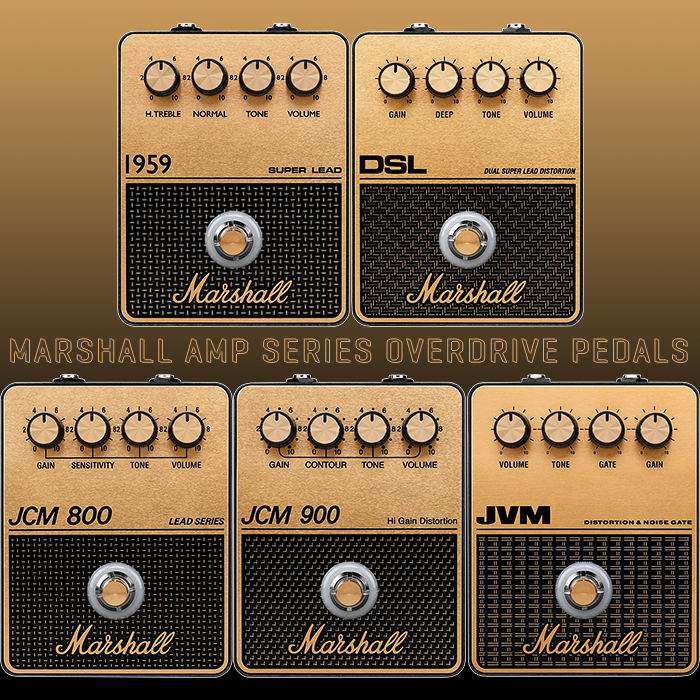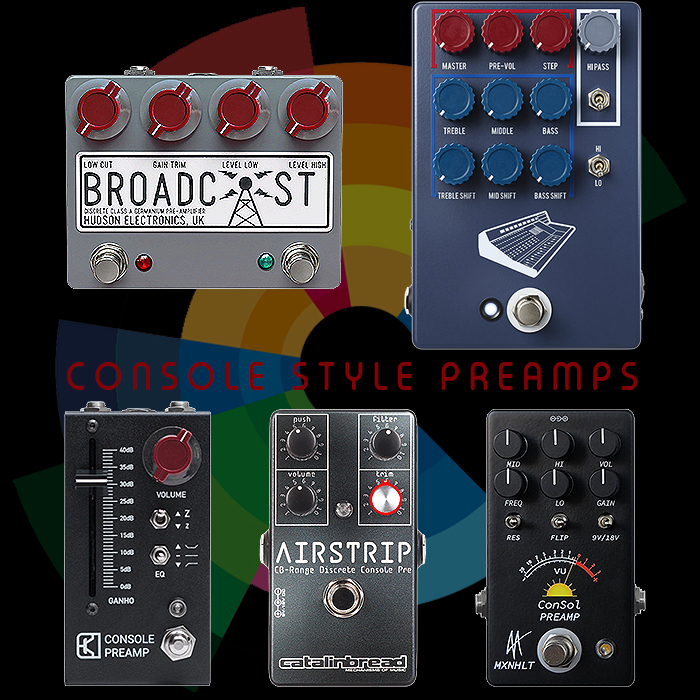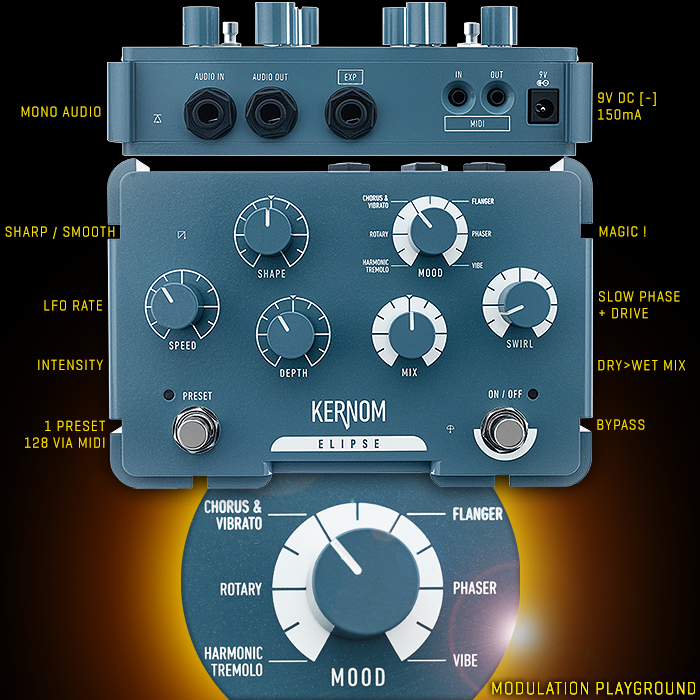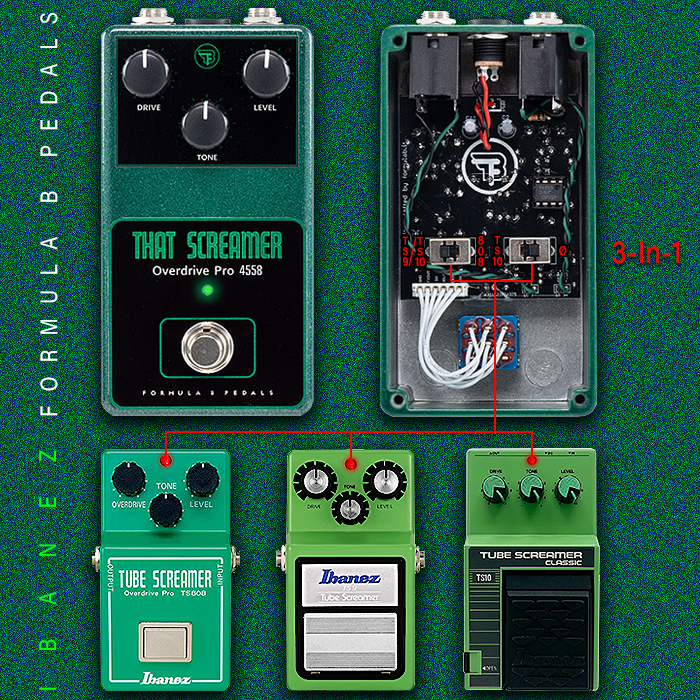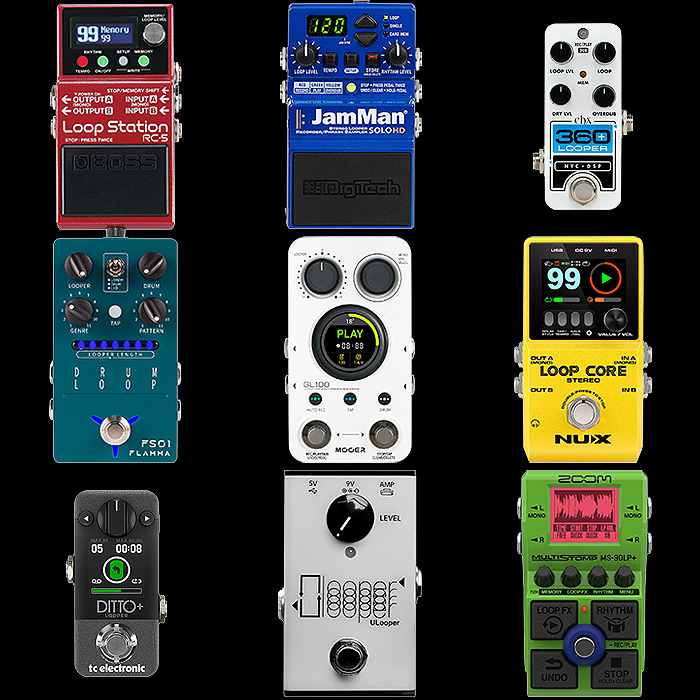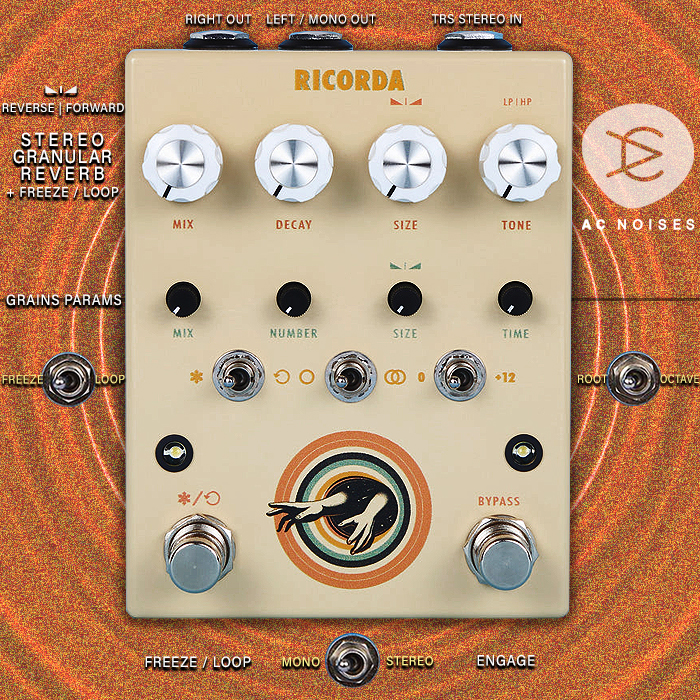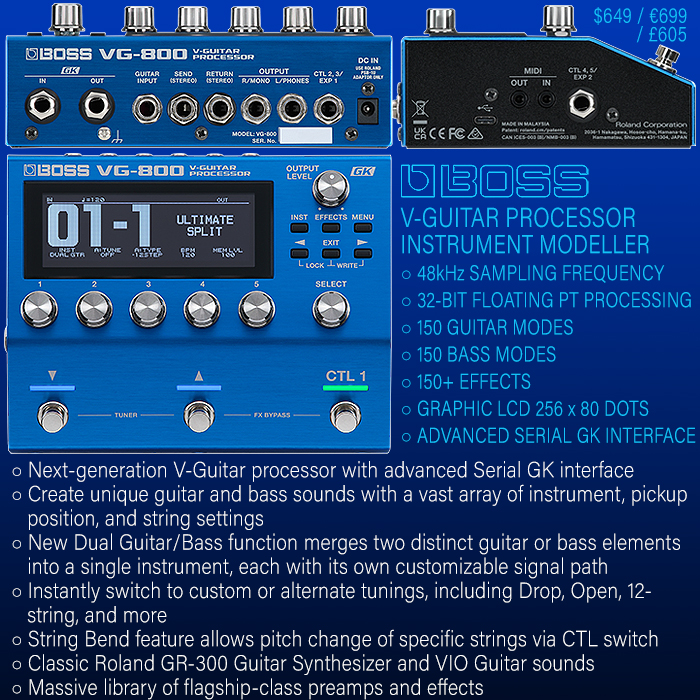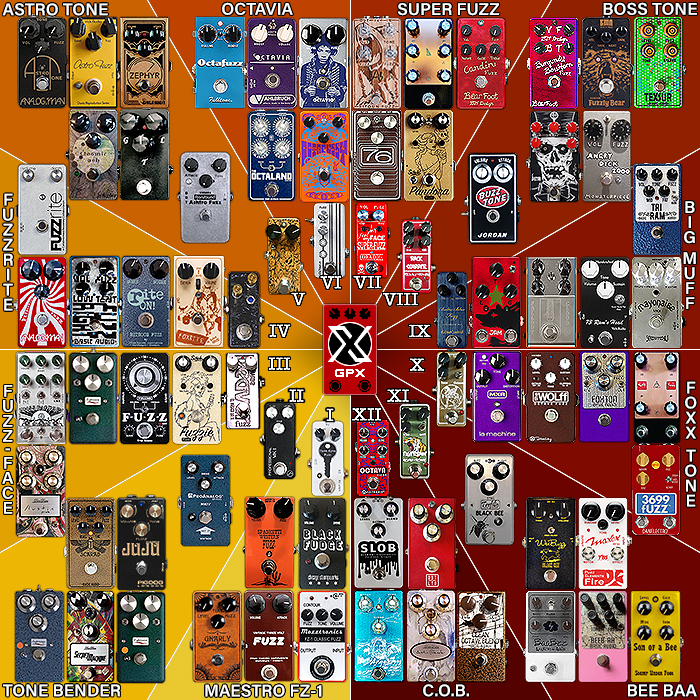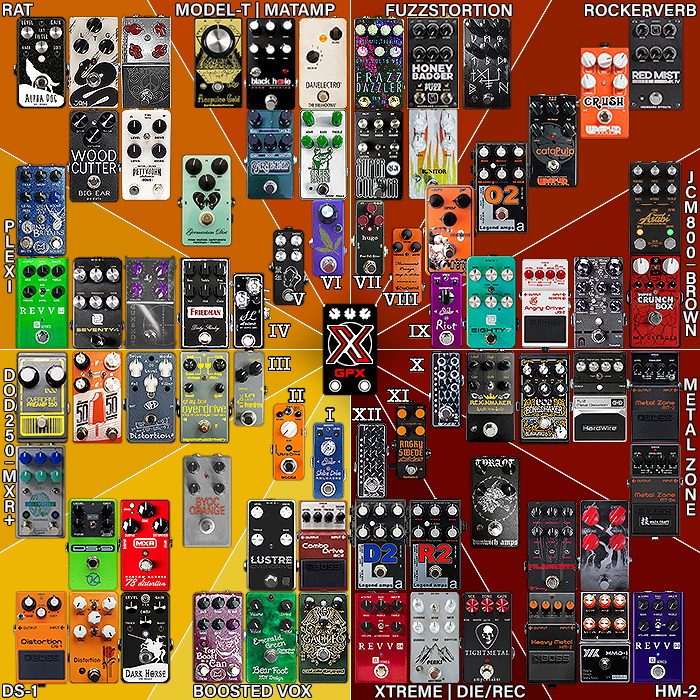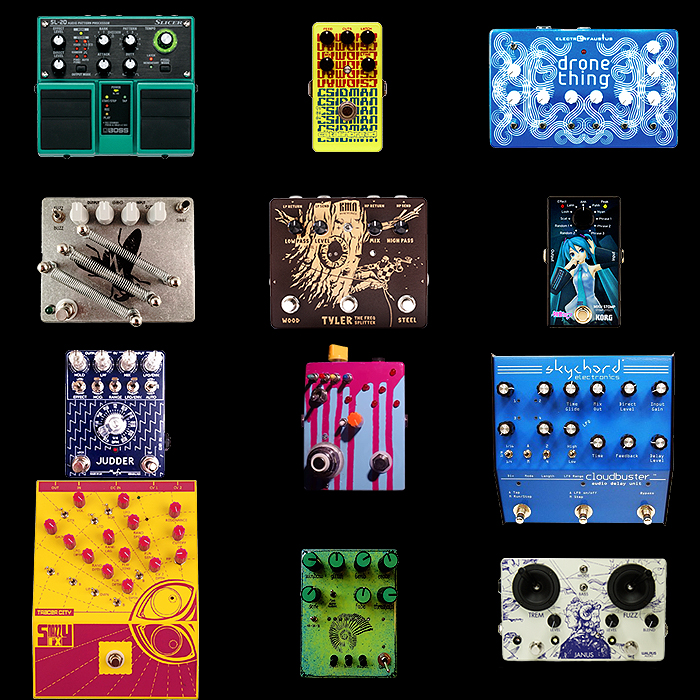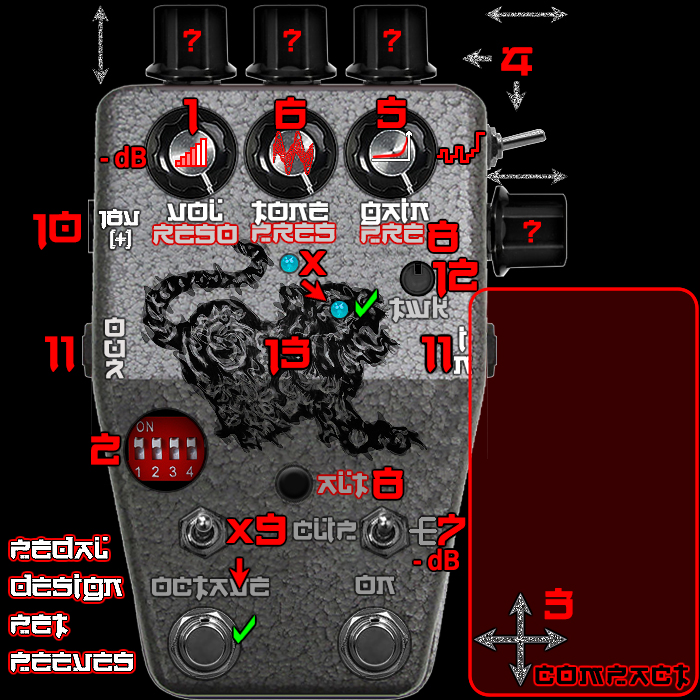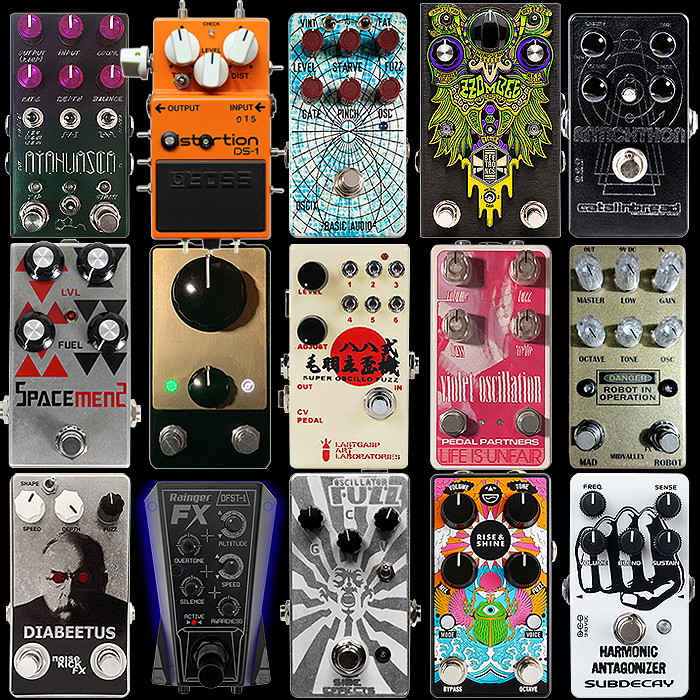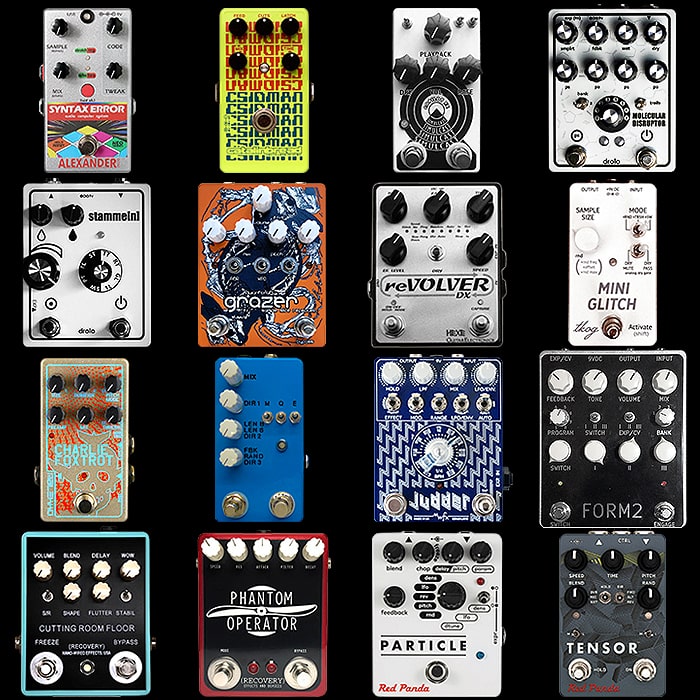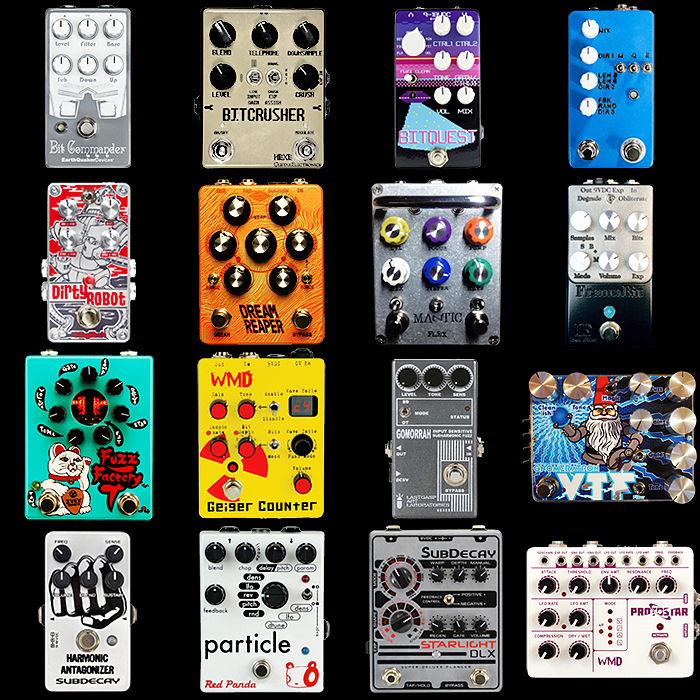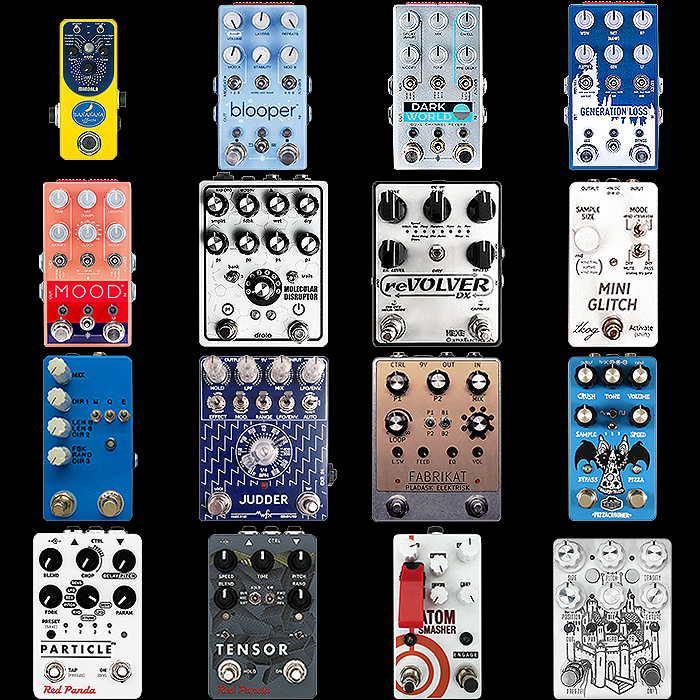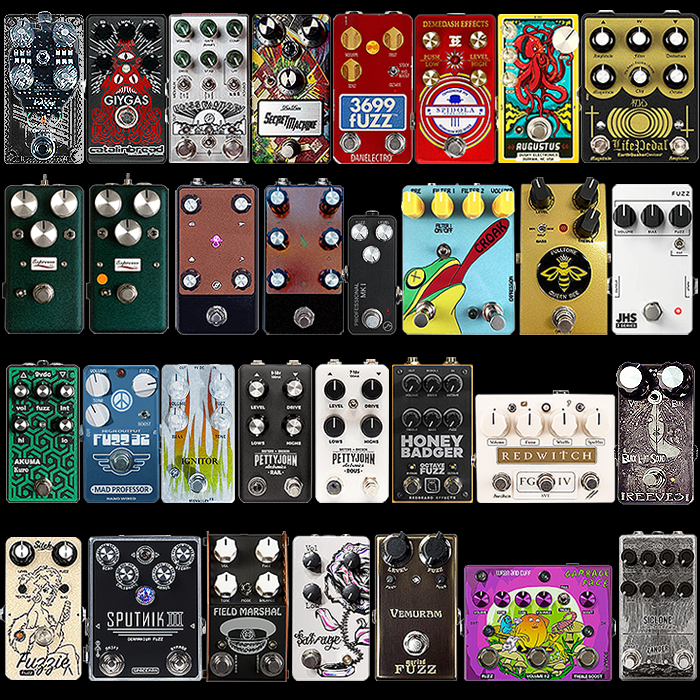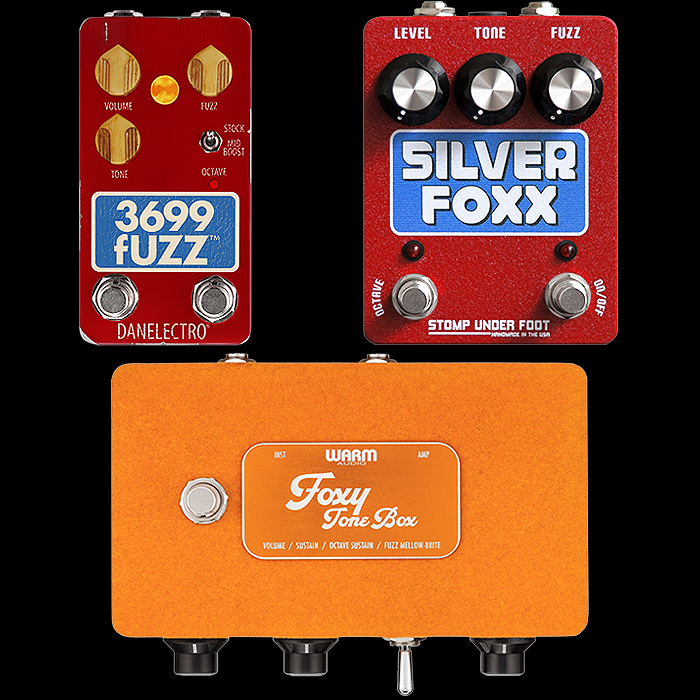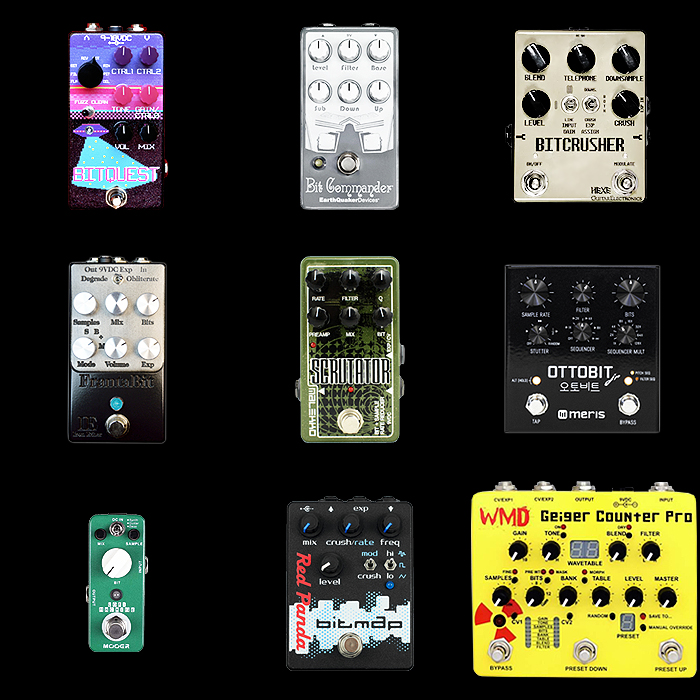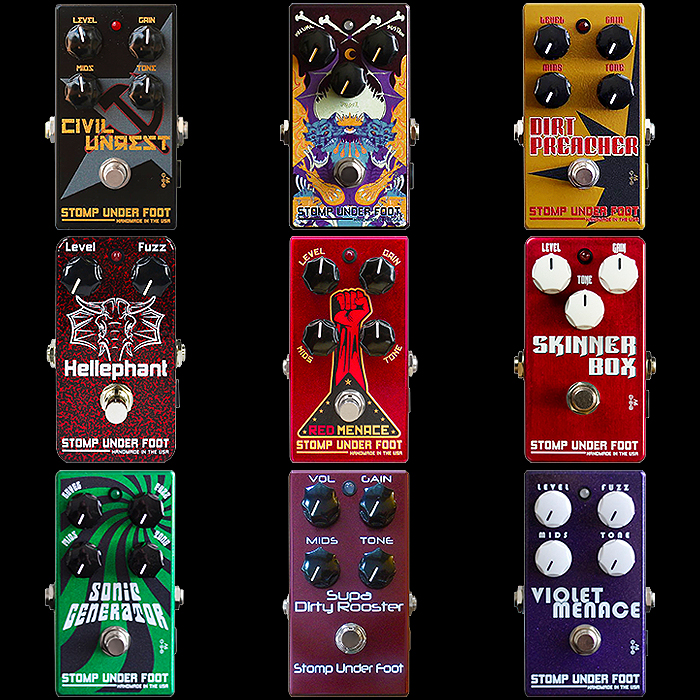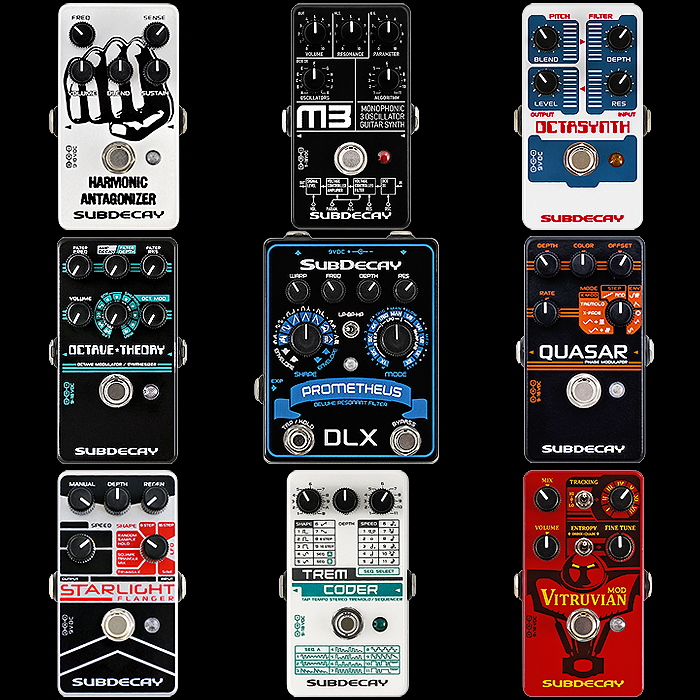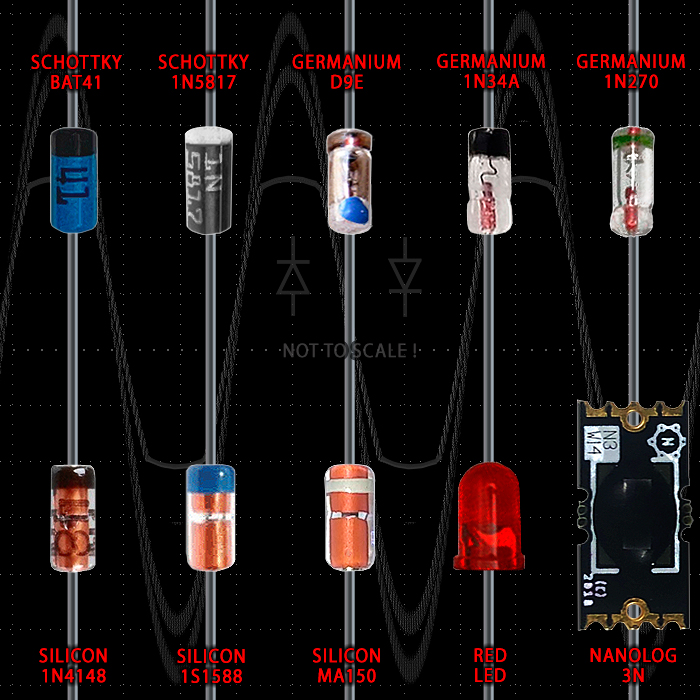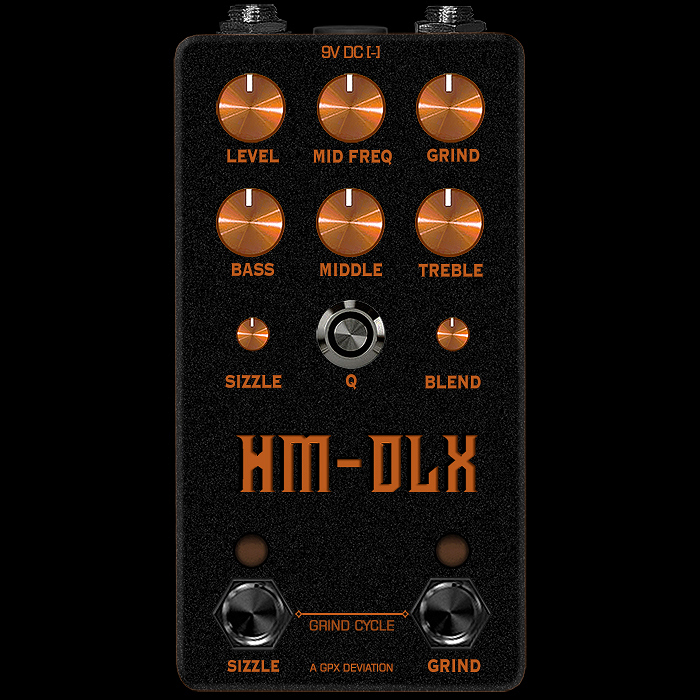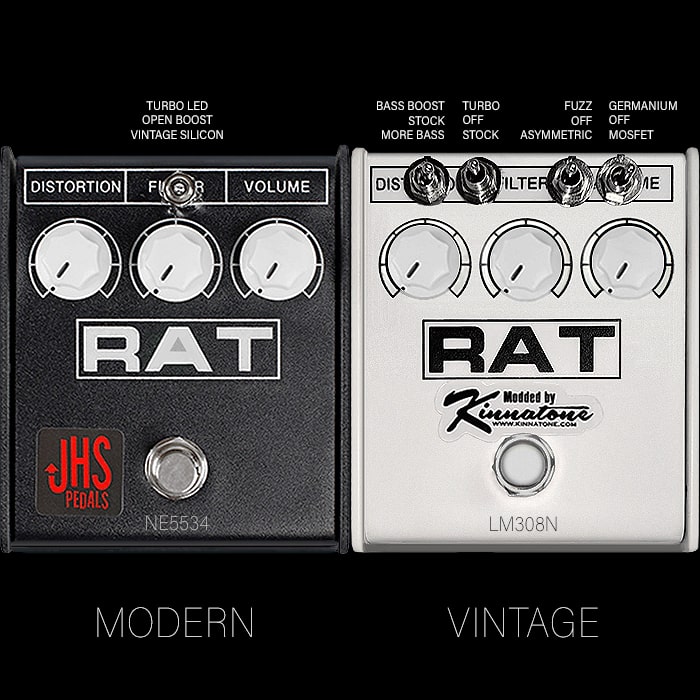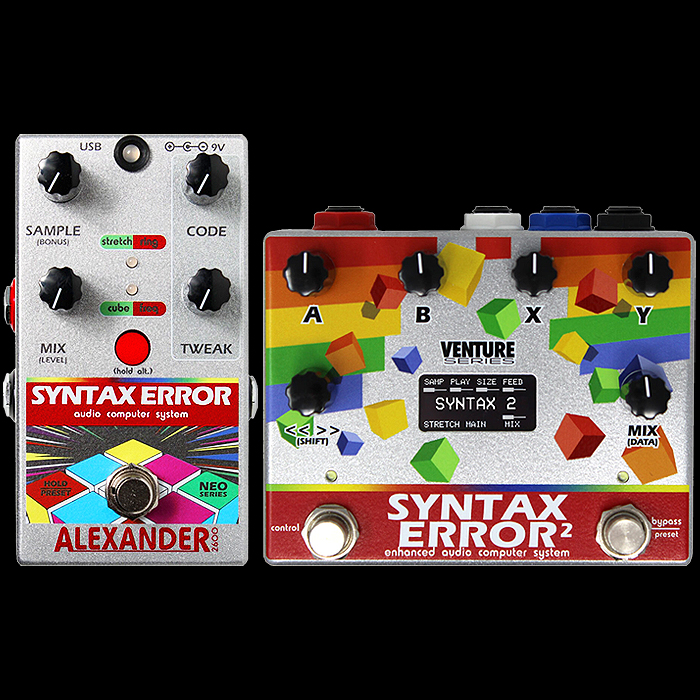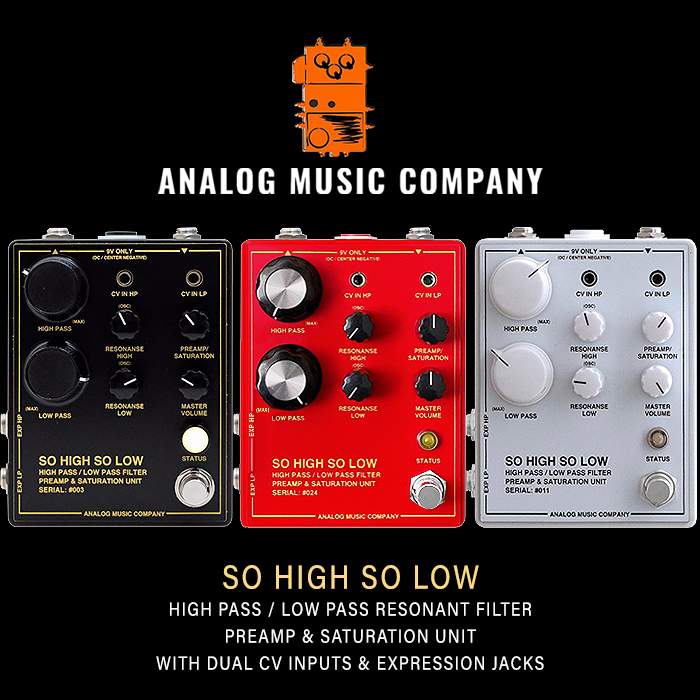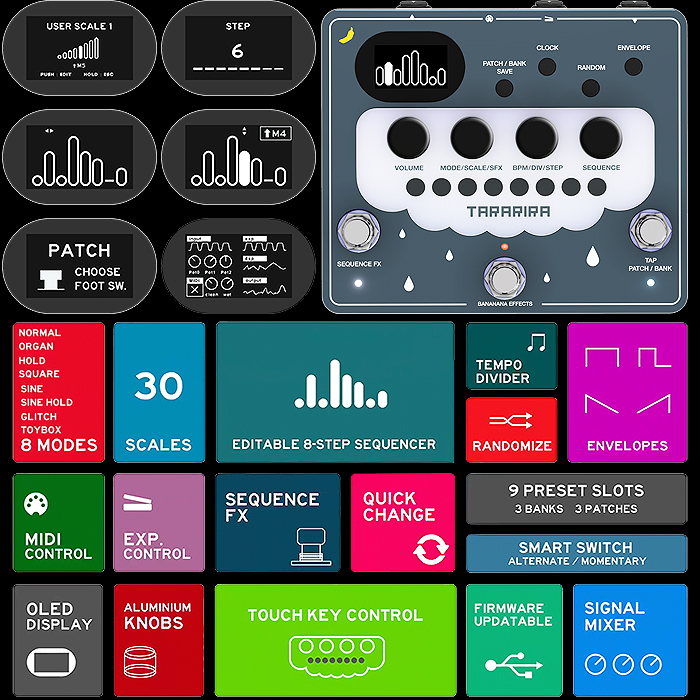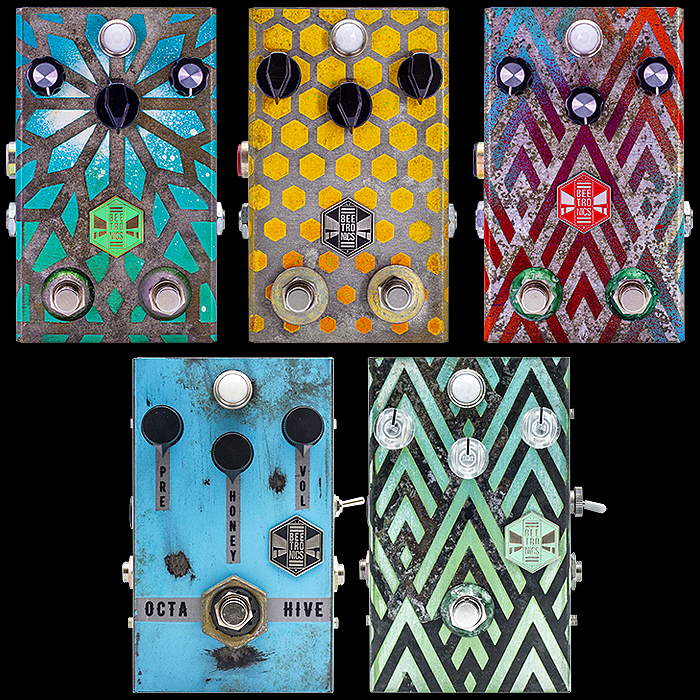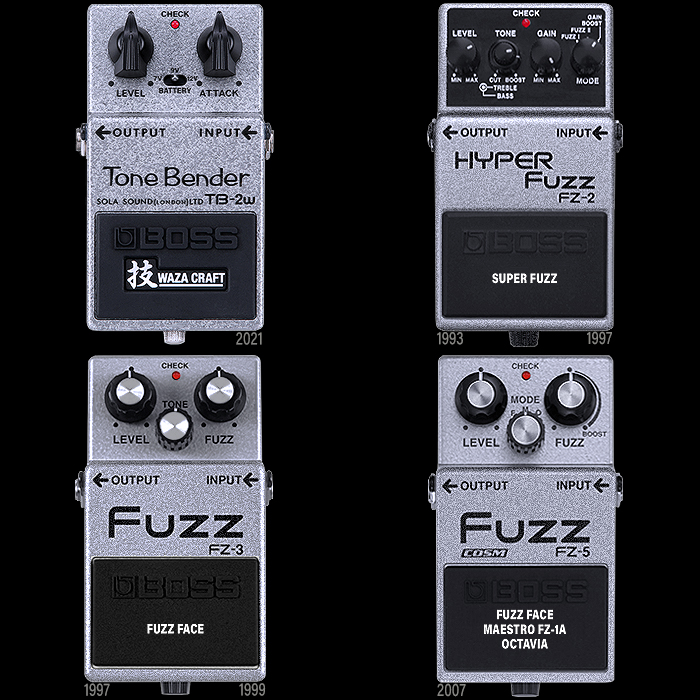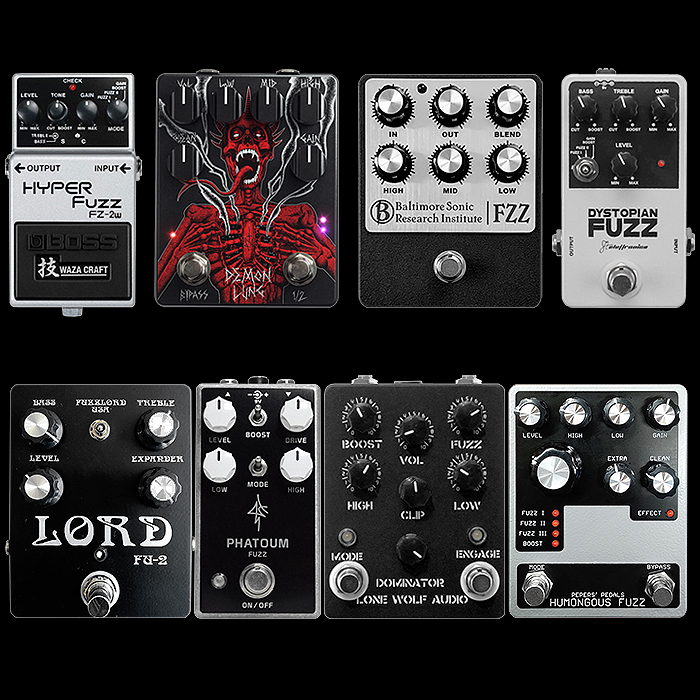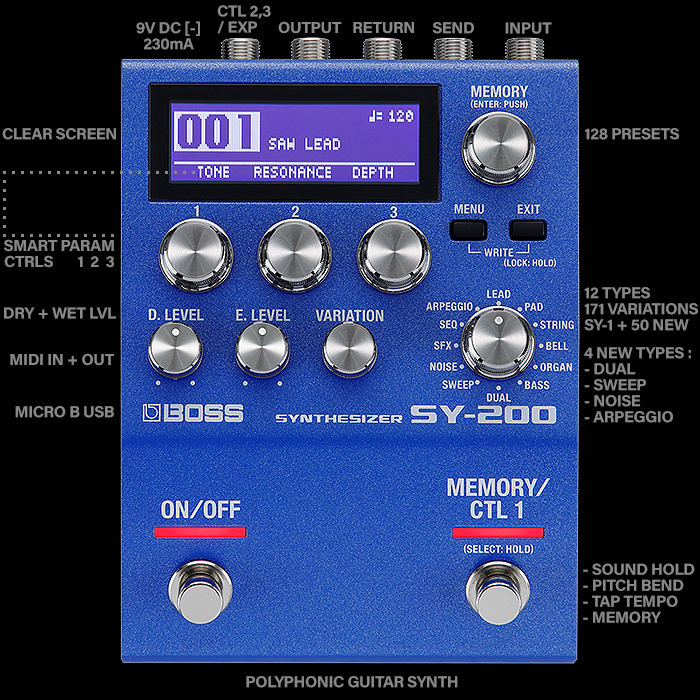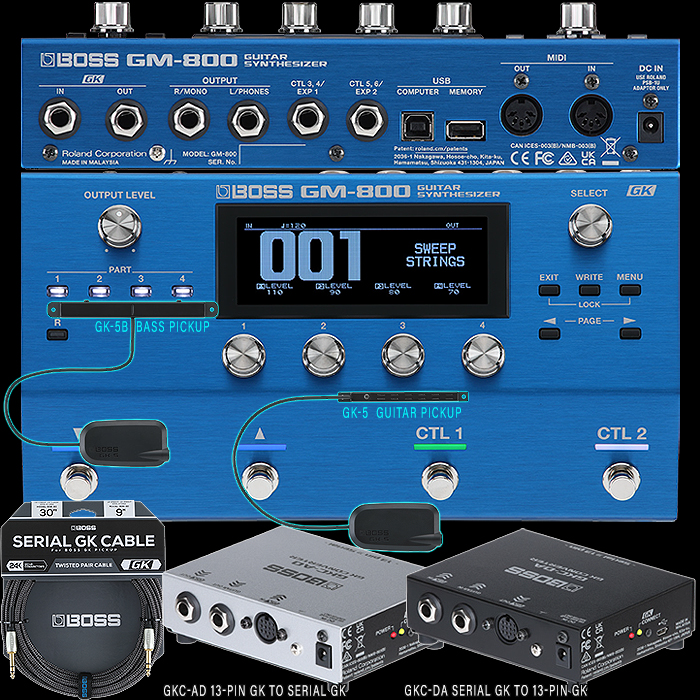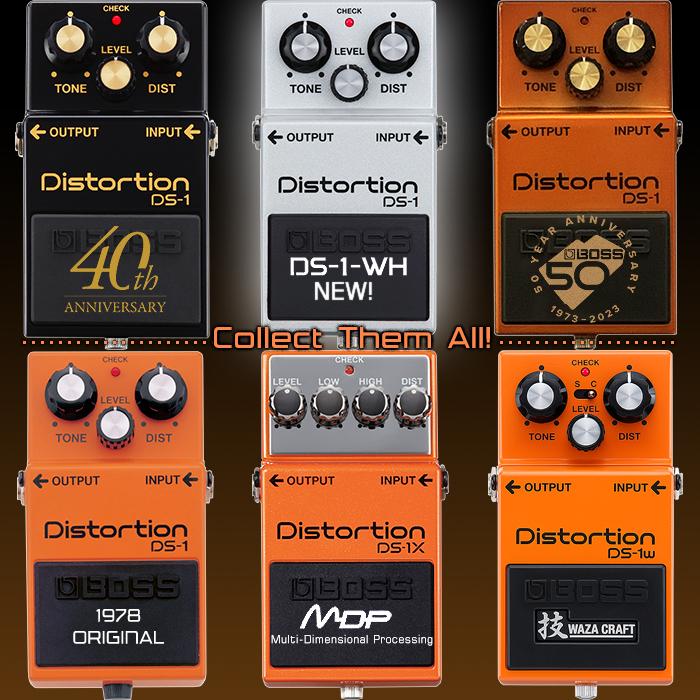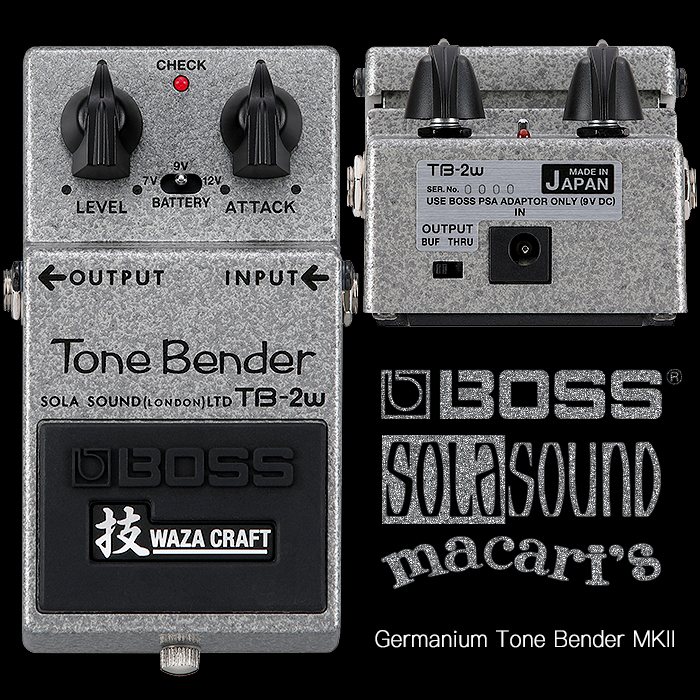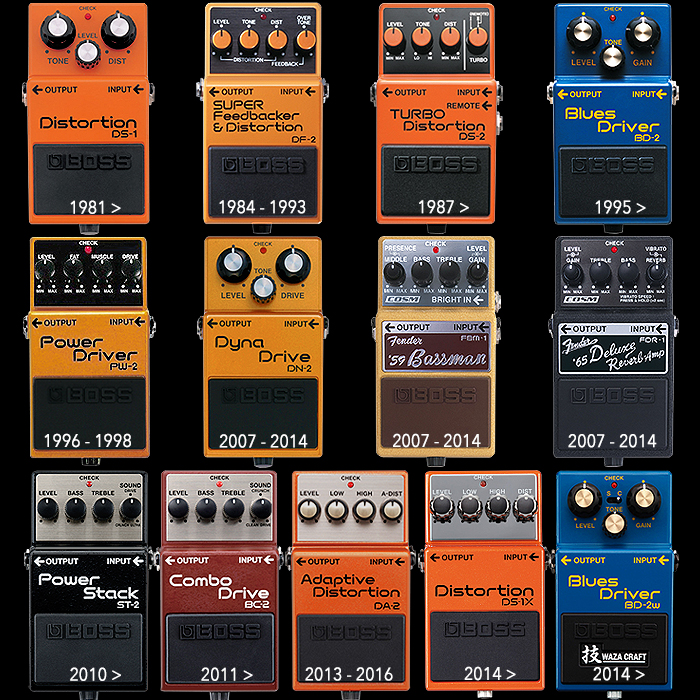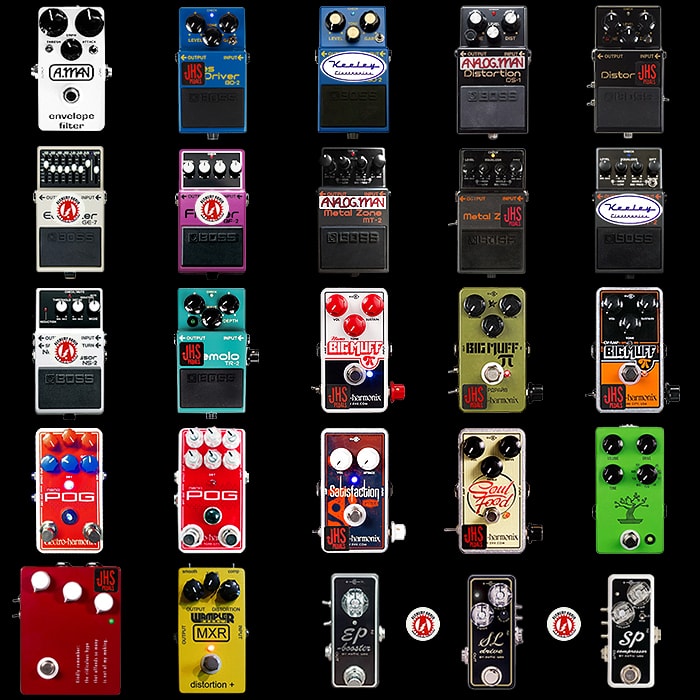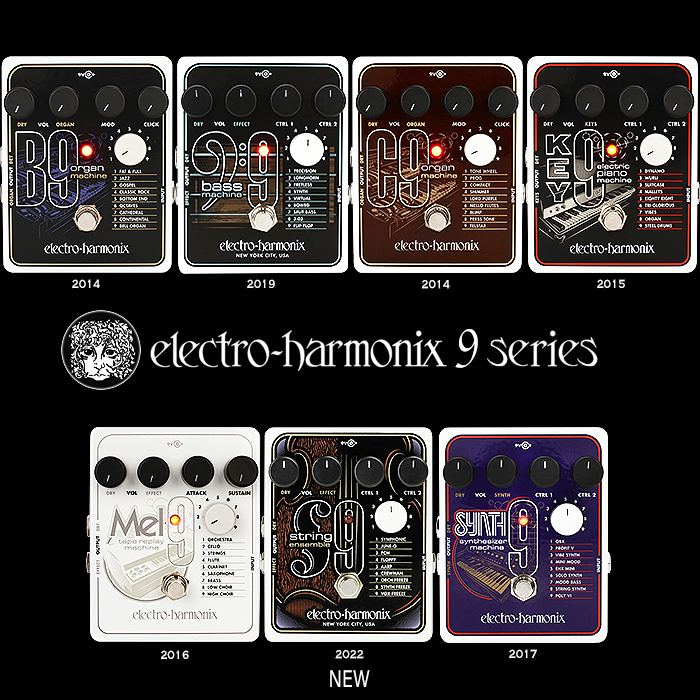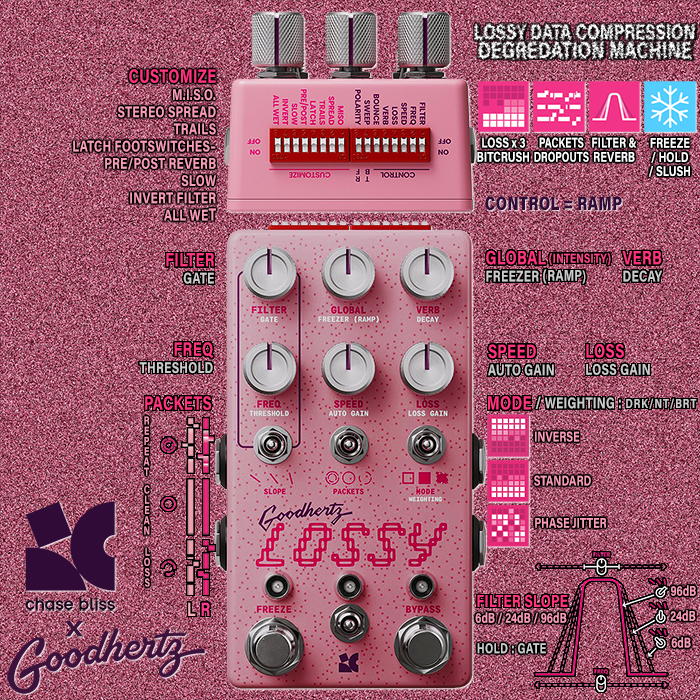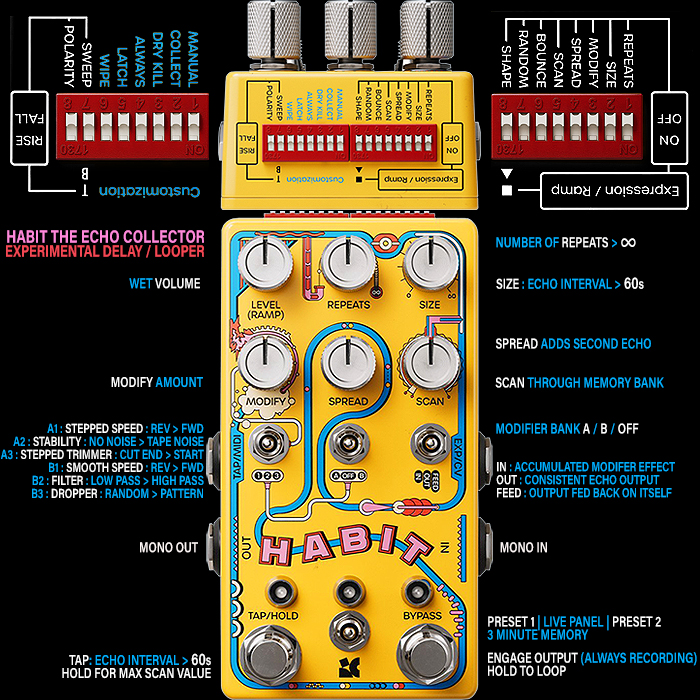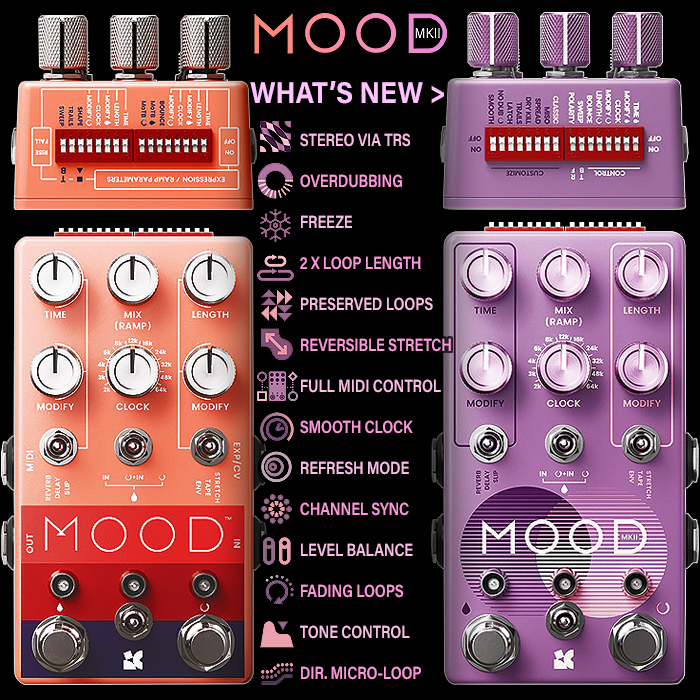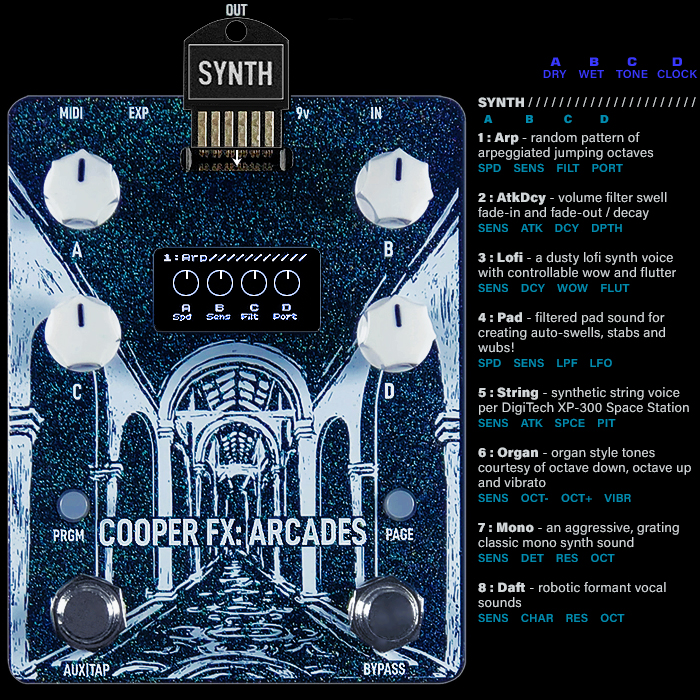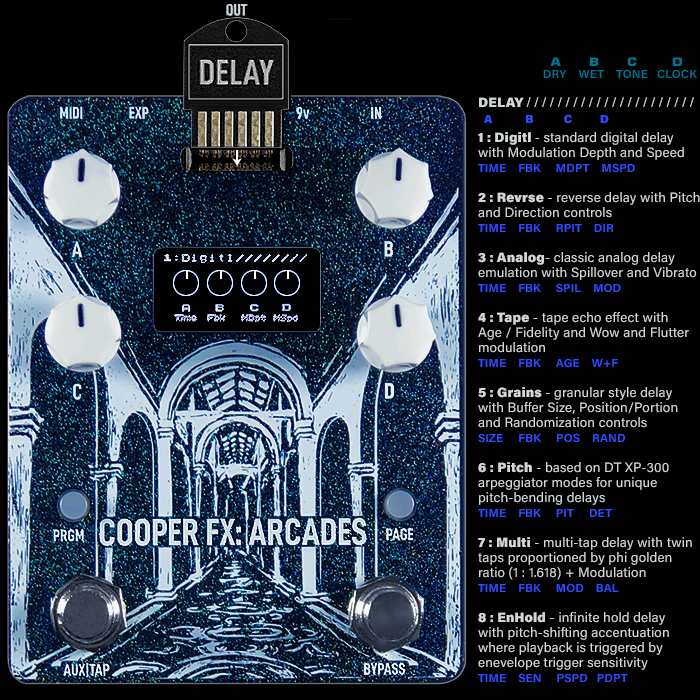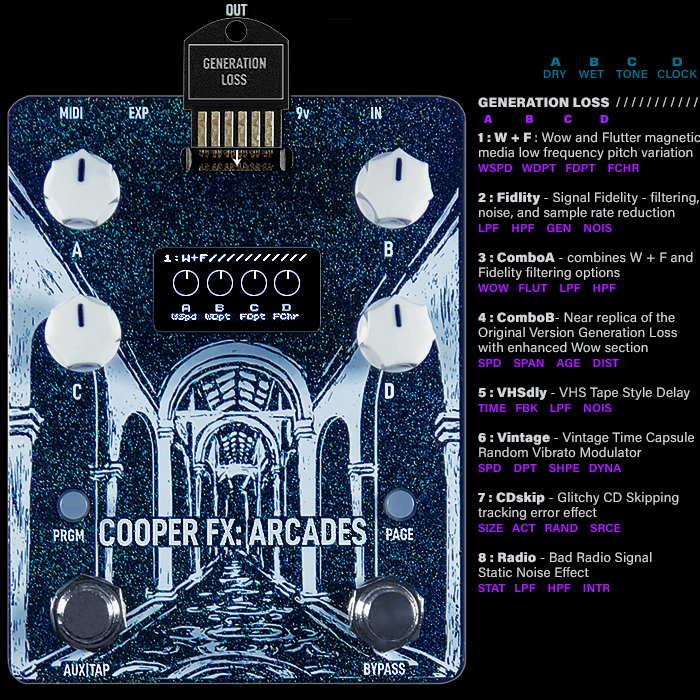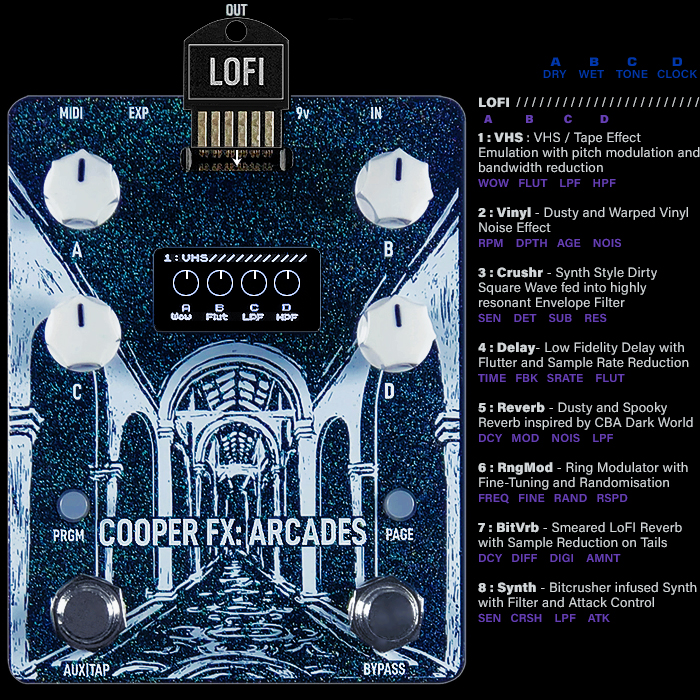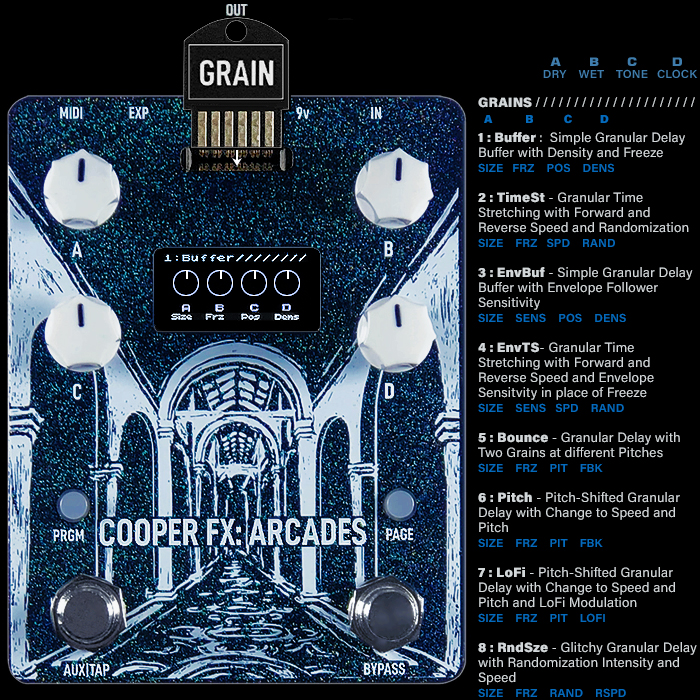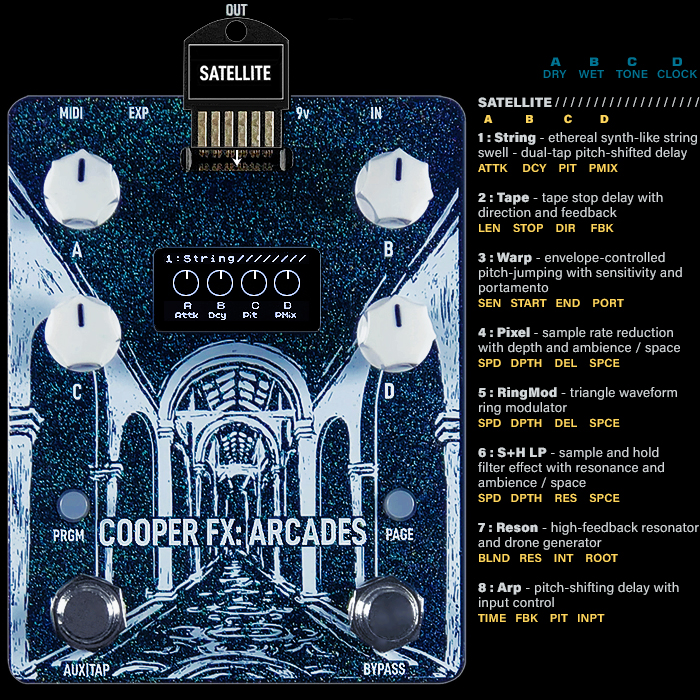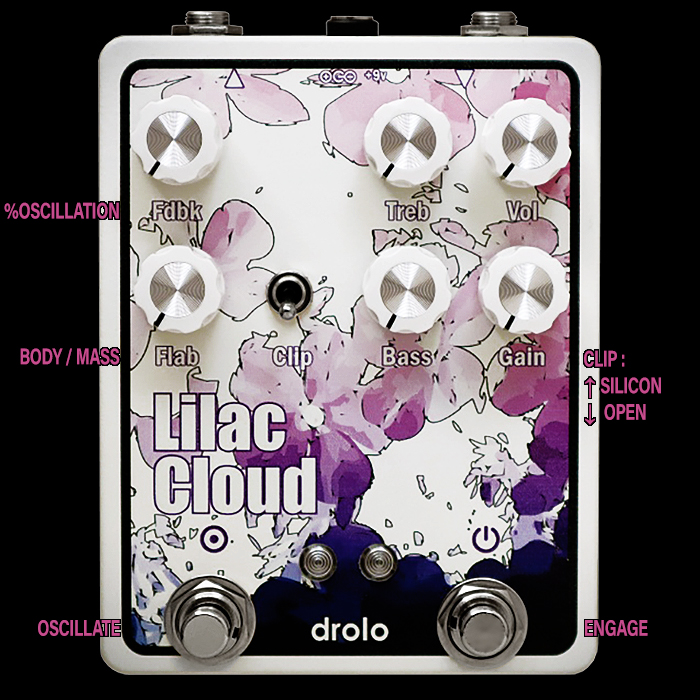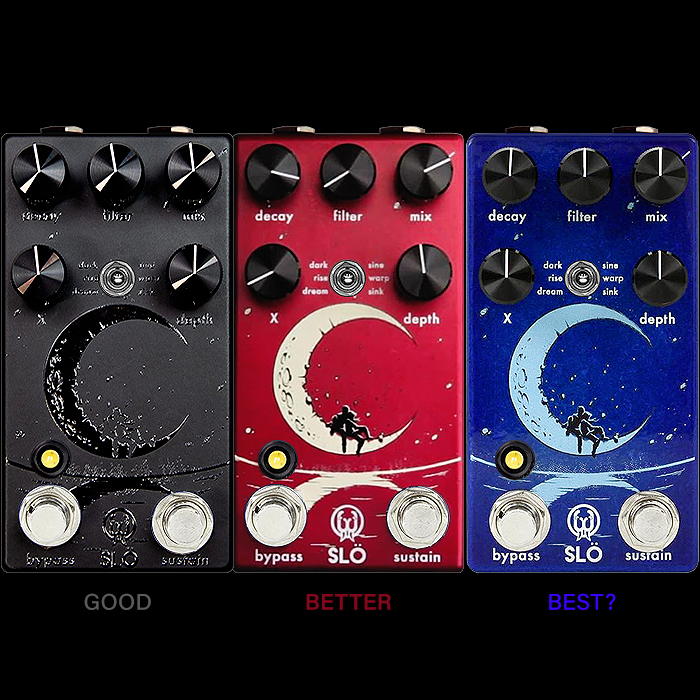Analog Music Company & Noise Space Audio Deliver the Ultimate Live Breadboarding Experience with their Ultra-Modded DS-1 Evil Pumpkin Experimental Glitchy Oscillating Drive-Distortion-Fuzz-Synth

I’ve been following this pedal’s development since it first emerged - now pictured in its second iteration with more evenly spaced toggle-switches around its perimeter. In short each of those 12 x 3-way switches is neutral / off in its middle position - while left/right or up/down gives you different pathways through the circuit which often impacts multiple circuit elements and component values simultaneously. In some ways this is something of a chaos-engine with around 500K different permutations. Conceptually it is not altogether that different to last year’s Wren and Cuff De La Riva Fuzz - which had 20 dip-switches which engaged different parts of its circuit. The DS-1 Evil Pumpkin is far more complex than that with rather more elements and nuances - although a large number of the combinations will result in unusable ungodly noise - so beware.
With all the toggles in the neutral / middle position it will deliver just a stock DS-1. It has an additional optical LFO circuit which is engaged by the first toggle switch and controlled for Rate by the knob on the left-hand edge of the pedal. All other switches require your own experimentation to decipher as they interact differently with each other depending on what exactly is selected at the time - and the relative positions of the various control knobs.
I asked Konstantin of Analog Music Company (AMC) as to what to label each of the switches - and he replied that it was impossible to assign proper characteristics - as depending on where the other switches are set to - you get wholly different results - which also typically requires some further recalibration of the knobs. The Evil Pumpkin is very much an equal collaboration between Konstantin of AMC and Serhii of Noise Space Audio.
There will be some ’serving suggestions’ forthcoming for some core sounds - you can of course have everything disabled and just use it as a bog standard DS-1 if you wish - but the fun of this pedal is in exploring some of its many different unusual modal areas and combinations which include :
- Bitcrusher
- Distortion
- Fuzz
- Glitch-Machine
- LFO / Oscillation / Tremolo
- Overdrive
- Sample & Hold
- Synth
- Theremin - via interaction with photo-cell sensor on surface and any focused light-source - e.g. torch
Over the next few weeks and months Analog Music Company and Noise Space Audio will be releasing some further choice preset settings to get you quicker to some of the cooler and more usable sounds so far discovered. For now there are a variety of short demos mostly on Instagram - which show you some of what is possible :
Fat Warbly Fuzz
Slightly otherworldly crunched fat fuzz flavour - properly thick and just a little off-kilter but all-cool!
Oscillating Warbly Drive = Fuzzy Drive + LFO + Synth
Cool atmospheric oscillating fuzzy drive with variations in LFO speed
Evil Pumpkin as Glitchy Fuzzy Bitcrushing Pulsing Oscillator
Some proper doomy sci-fi-sounds with this really cool glitchy setting - a sort of Bladerunner in the Underworld soundtrack!
Evil Pumpkin as Distortion Theremin!
Using the mobile phone torch in a Theremin fashion on the photo cell sensor while running a chunky distortion voicing
Bleeping Fuzzy Torch Theremin!
Here the photo cell receptor / sensor is controlled by a flashing torch which delivers short bursts of fuzzy drones
Evil Pumpkin as Sample & Hold Synth
A cool way to modify your signal flow on-the-fly - via Sample & Hold manipulation of throughput
Evil Pumpkin as LFO Noisemaker
The Evil Pumpkin essentially used as a Drones, Pulses, Squelches and Synth-style Oscillator Tone Shaper - with Theremin Distortion setting demo'd at the end - interacting with torch function of mobile phone in conjunction with photo cell sensor!
Who is this Pedal for?
This is obviously for your inner Radiohead persona or your Jonny Greenwood, Ed O'Brien and Matt Bellamy style experimentalists. This is a journey into sound with lots of potholes and challenges along the way. Possibly best manipulated as a more hands-on desktop style pedal - while I will be experimenting with it on the floor - so DIY / builder's knee-pads are in order really.
You need to have your notebook handy and ample refreshments and oodles of patience as you may hit numerous dead-ends in your explorations - but there will be plenty of eureka moments too - which you have to document immediately and precisely - the exact positions of knobs and switches.
Possibly longer-term, Konstantin and Serhii will need to figure out some kind of digital control layer which allows you to easily page through all the workable combinations - as there are likely to be just as many if not more unusable combinations - so if you don't have patience for this - then this is certainly not for you.
This is a fantastic example of a live breadboarding circuit - where you are making dozens of minute changes to the circuit flow and seeing what the resulting throughputs and outputs are and how you can further tweak and manipulate those.
For me this is the ideal inspiration machine - if you're in any way stuck in a creative rut - then this is the engine to re-spark your creative impulses to find some slightly odd but captivating soundscape that gets your creative juices flowing again.
I will lay down a proviso that this is likely to be a very frustrating pedal for some, but for those of us who dare to be different - this will yield moments of rare spontaneous joy. I expect this pedal to be deeply frustrating on some days and more pleasurable on others. This is though still very much an experiment in progress - and future iterations will no doubt see some refinement to the process.
I've always been a fan of modded pedals - and let's be fair - this is one of the most extreme levels of modification yet witnessed - though I have seen some with even more knobs, buttons and switches, but not really in the compact format that I can recall - I think overall this is more of a hedgehog than a porcupine - it's not yet overwhelmingly bristling with toggle-switches - possibly that is yet to come!
I hope to get my hands on one of these for some deeper analysis sometime in the not too distant future - which is dependent on my ongoing negotiations with Konstantin and Serhii - so wish me luck!
Who else is brave enough to go for one of these? The challenge has been issued!
They are available for around $250 with shipping included as far as I can tell - from the Analog Music Company Reverb.com store - and are shipped from Kiev in Ukraine.







